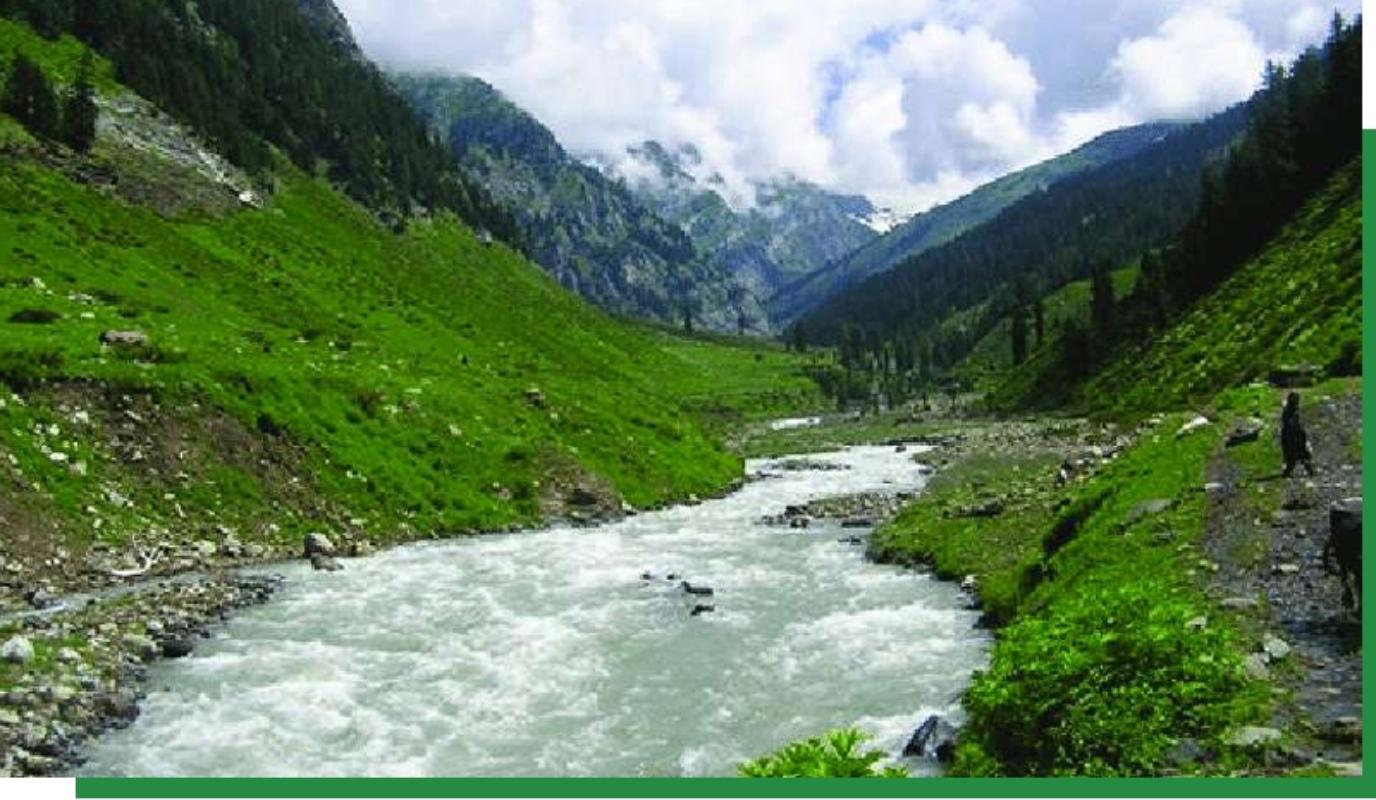Introduction:
The history of evolution of human being reveals that forest has always been crucial for life and livelihood. The dependency on forest changed drastically over the time from initially living in the forest for everything to using forest goods and services while living outside of the forest. In last few centuries, with technological inventions and development of other sources of income, the dependency of people on forest for livelihood decreased significantly. However, even today, worldwide around 1.6 billion (25% of world population) people depend on forest for their livelihood (FAO, 2014). Indigenous forest dwellers across the globe are heavily dependent on Non-Timber Forest Produces (NTFP) and numerous other ecological services to sustain their life and livelihood. India does not have official number of people dependent on forest partially and fully. However, some estimates suggest that about 275 million to 400 million Indians are dependent on forest (TERI, 2015). These people living in forest fringe villages depend upon forest for variety of forest produces and services. These includes edible fruits, flowers, roots, leaves, medicinal plants, firewood and tools for agriculture, fodder and cattle grazing.
While the forest has been main source of livelihood for millions of Indians, It also raises genuine concerns related to environment and protection of the forest. Numbers of people, group and institutions have argued that the huge dependency on forest will gradually degrade forests and will lead to environmental crisis. A group of NGOs has in fact challenged the Forest Rights Act, 2006, which allows tribal and other forest dwellers to collect, use, process and sale minor forest produces. While hearing this case on February 13, 2019 the Supreme Court ordered to evict nearly 1.8 million families whose claim under the forest rights Act, 2006 have been rejected. However, the court later stayed its own order after hearing petition by few state governments. Moreover, some people raised concerns related to ensuring sustainable collection and use of forest produces. There is high chance that if forest produces are extracted un-sustainably, the quality of forest will degrade. This article is an attempt to highlight the potential of forest base livelihood in India and its challenges.
Forest and Local Livelihood:
According to the latest India’s State of Forest Report, 2017 (ISFR) the country’s forest cover is more than seven lakh square kilometer. This comprises little more than 21% of total geographic area of the nation. This forest cover is much less as compared to global standard of 33% forest of the total geographical area. However, successive ISFRs reveals that the forest cover remained unchanged even after diversion of huge amount of forest land for non-forest use. According to a report, of the total 11.86 hectare forestland diverted from 1980 to 2001 more than two third (69%) land diverted for development and industrial activities such as construction of road, power projects, mining and railways[1]. The Forest Survey of India (FSI) attributes unchanged gross area of forest in last three decades to activities such as forestation and better management of forest and forest produces.
India’s Forest Cover
(Area in Sq Km)
| Type of Forest | 1991 | 2001 | 2011 | 2017 |
| Dense forest (more than 40% canopy density) | 3,85,008 | 4,16,809 | 4,04,207
|
4,06,476 |
| Open forest (10% to 40% canopy density) | 2,49,930 | 2,58,729 | 2,87,820 | 3,01,797 |
| Scrub Area (Canopy density less than 10%) | 59,641 | 47,318 | 42,176 | 45,979 |
Source: Compiled from India’s State of Forest Reports, 1991 to 2017
The NTFP commonly refer to heritable material maintained within and among trees and other woodly plant species that are of actual or potential economic, environmental, scientific and societal value[2] (FAO, 2014). India too has rich tradition of collecting and using such minor forest produces for various purposes. Major types of forest produces and services in India are categorized in the following matrix.
Minor Forest Products
| Edible products
|
Fruits, flowers, seeds, roots, roots, rhizomes, tubers, etc. of several forest species are edible. |
| Grasses and grazing
|
Forests provide grazing facility to about 30 per cent of the total livestock population of the country. |
| Fodder trees and shrubs
|
Forests provide fodder from trees, shrubs and climbers. Leaf fodder of several tree species is almost as nutritious as that of agricultural fodder crops. |
| Bamboo and canes
|
India is very rich in bamboo resources. The bamboo is used for housing, for rural agricultural works, for paper pulp, for packaging and other uses. |
| Oil seeds
|
Many tree species produce oil-bearing seeds, which are commercially important. Some of these oils are fit for human consumption. |
| Essential oils
|
Many species in the Indian forest yield essential oils, which are used in making perfumes, soaps, cosmetics, etc. |
| Tans and dyes
|
A variety of vegetable tanning material are produced in the forest. |
| Gums and resins
|
Gums and resins are exuded by trees as a result of incision or injury to the bark of wood. Gums are collected from several tree species. Resins find wide use in industries and in Indian pharmacy. |
| Fibres and flosses
|
A wide range of plants, yielding fibre occur in the forests of India. Fibres are obtained from tissues of different parts of certain woody plants, which are used for making cloth, rope and cordage. |
| Flavouring plants
|
A variety of plants including cumin (seeds of Carum carvi), cinnamon (bark of Cinnamomum zeylanicum), cardamom (dried capsule of Elettaria cardamomum), bay leaf (leaves of Cinamomum tamala), are obtained from forests used locally and throughout the world. |
| Animal products
|
Animal products include Lac, honey, silk, horns, fur, skins, tusks, musk, bones, fur and feathers, meat etc. |
| Leaves | Leaves of various forest tree species have been used for various purposes since ancient times and help earn forest revenue. Leaves of several trees and shrubs are widely used as food, fodder, medicine, etc. |
Source: Nautiyal, S. and Kaul, A.K. Eds. Non-timber forest products of India. Dehradun, Jyoti Publishers. 2003.
The non-wood forest products, generally termed as Non-Timber Forest Produce (NTFP) of plants includes bamboo, canes, fodder, leaves, gums, waxes, dyes, resins and many other forms of food including nuts, fruits and honey. India’s forest cover of more than seven lakh square kilometer has huge potential of producing these NTFPs, which contributes substantially in rural the economy.
The availability of kinds of forest produces in India varies from region to region because of the rich biodiversity of the country. This further has diversified and enriched local traditional ecological knowledge, practices of collection and use of forest produces all across the country. We don’t have gross estimation of abundance and potential yield of NTFP, however, some researcher attempted to estimate region specific potential of NTFPs. TERI in 2018 estimated abundance and potential yield of selected forest produces in central and western states of India (See table below)
Total abundance and potential yield of major NTFP in 9 selected States
(Madhya Pradesh, Chhattisgarh, Odisha, Jharkhand, Andhra Pradesh, Telangana, Maharashtra, Rajasthan, and Gujarat)
| S.no. | MFP | Total Potential abundance (No. of Tree) | Total Potential Yield |
| 1 | Bamboo | 3338 million bamboo culms | 2837 million culms |
| 2 | Chironjee | 42 million trees | 350 million tones of Chironjee pods |
| 3 | Gum Karaya | 0.45 million trees | 1000 tonnes |
| 4 | Harra | 11.91 million trees | 0.66 million tones |
| 5 | Karanj | 9.1 million trees | 0.56 million tones karanj seeds |
| 6 | Lac | 510 million tress of Kusum, Palash and Ber | 16,978 tonnes |
| 7 | Mahua Seeds | 880 million trees | 88 million tones of hahua seeds |
| 8 | Sal leaves | 19.8 million trees | 3.2 million kg leaves |
| 9 | Sal seeds | 0.39 million Sal trees | 4.75 million tones of seeds |
| 10 | Tamarind | 0.85 million trees | 55800 tonnes of tamarind |
| 11 | Tendu leaves | 3.1 billion bushes and 1.8 million small trees | 0.36 million tones of tendu leaves |
| 12 | Wild honey | — | 30000 tonnes of wild honey |
Source: TERI, 2018
It is difficult to quantify the value of NTFP produced in Indian forest and collected by people. However, an assessment of Joint Forest Management in 2011 estimated that about 99 lakh families connected with JFM committees all across the country used NTFP of worth around Rs. 1928 core[3]. This estimate includes worth of fodder and firewood along with commercially potential forest produces. The JFM is relatively new mechanism to collect, process and use forest produces and services, their also exist traditional systems of tribal and other forest dwellers related to collection and management of forest produces. Therefore, in actual the value of NTFP and related services is much higher than estimated by JFM alone.
Other than the environmental resource, forests in India are treated as social and economical resource. More than 300 million people are deriving full or partial livelihood from forests (TERI, 2018). Of the total people dependent on forest, tribal population accounts for more than 100 million all across the country[4]. There are around 1.73 lakh villages located in and around forests, and all of them are either fully or partially dependent on forests (MoEF, 2006).
Tribal communities across the country are more dependent on these forest produces for their livelihood as around 30-40% of their income comes from collection of forest produces[5]. According to the report of the National Committee on Forest Rights Act, 2011 an estimated 100 million tribal derives their source of livelihood from the collection and marketing of minor forest produces. Moreover, a large number of tribal and non-tribal group in Indian villages are heavily dependent on forest for cattle grazing, collection of fodder and firewood.
Challenges of Forest based Livelihood:
The dependency of people on forest for livelihood has environmental implication. The unsustainable use of goods and services from the forest adversely affect environment and the biodiversity. Therefore, concerns for sustainability of traditional forest base livelihood practices have emerged in big way in last few decades. Largely there are two opinions. One, which believes that forest dwellers, should be given all rights to use forest goods and services in sustainable manner. The opposing opinion believes that allowing access of forest for its dwellers will further degrade forests, which will lead to serious environmental crisis. While both sides have enough evidences and justifications in their support, it is important to resolve the issue with the perspective, which should respect people’s rights over forest produces along with urgent need of protecting richness of the biodiversity for greater cause. Therefore, it is highly important to stop further degradation of forests due to local livelihood practices and promote sustainable harvesting of forests goods and services.
Local Livelihood and Forest Degradation:
People living close to and within forest are partially or fully dependent on forest for variety of forest products for food, medicine, fodder, housing, livestock and other marketable products. Various field based studies shows that dependence on forest for livelihood results in degradation of forest[6]. Three wildlife NGOs have challenged the Forest Rights Act, 2006 in the Supreme Court on the basis that allowing tribal and other forest dwellers in the forest will destroy biodiversity and wildlife. The fight between livelihood and environment protection will continue unless we provide alternative livelihood options for forest dwellers and tribals. Many experts think that given the traditional knowledge and skills of forest dwellers, alternative occupations should be developed in the sector of tree based livelihood outside the forest. It will serve two purposes. One, it will decrease pressure on the forest and second, it will increase tree cover outside the forest area.
Sustainable Harvesting of NTFPs:
The expansion of market in last few decades has substantially changed the rural economy. It has generated huge demand for rural products and raw material. In the case of NTFPs, the market has increased demand of a variety of forest produces. It has guaranteed relatively more cash inflow in the villages. On the contrary, the boom in forest based rural economy has resulted in exploitation of forest beyond its carrying capacity in many parts of the country. DN (2001) in a study in the North-eastern states found that over extraction has led to decline in the availability of various forest produces. In many parts of these states, people started migrating due to unavailability of marketable forest produces after a point. Traditional systems of management of forest produces were effective in regeneration of forest and forest produces. But, with the intrusion of the market in rural and tribal economy, the traditional systems of NTFP management have failed (DN, 2001). Therefore, it is important to develop a system for sustainable harvesting of forest produces.
Conclusion and Way Forward:
Forest goods and services provides livelihood to millions of Indians. The relationship of indigenous people with forest for ages has developed numerous social and cultural system of forest management in scientific and sustainable manner. However, with intrusion of market forces and increasing commercialization of minor forest produces, these traditional systems are in danger. This shift in rural and tribal economy has promoted over exploitation of forest produces, which further leads to degradation of forests.
The Panchayat (Extension to Scheduled Areas) Act, 1996 (PESA) and the Scheduled Tribes and Other Forest Dwellers (Recognition of Forest Rights) Act, 2006 (FRA) protects right of forest based livelihood of forest dwellers in India. Provisions of these two laws override other laws, which had restricted tribals and forest dwellers from accessing goods and services from the forest. These two laws recognize traditional rights of forest dwellers and allow them to collect, process, use and sale forest produces and services. However, we still do not have market mechanism, infrastructure and institutions to ensure sustainable harvesting of these forest produces. While better management of forest produces can improve economic conditions of poor forest dwellers, we must also be cautious about degrading forest and over exploitation of minor forest produces.
References:
- Ministry of Environment and Forests. 2006. Report of the National Forest Commission. New Delhi: Ministry of Environment and Forests, Government of India. 421 pp.
- TERI, ‘Livelihood of Local Communities and forest degradation in India: Issues for REDD+’, TERI, New Delhi.
- TERI, 2018, ‘Minimum Support Price of Minor Forest Produce (MFP) and Its Sustainable Harvest: A Social Safety Measure for MFP Collectors in India’, TERI, New Delhi.
- DN, 2001, ‘Managing NTFP: Problems of Unregulated Commons’, Economic and Political Weekly June 23, 2001.
- FAO, 2014, ‘the state of the world’s forest genetic resources’, Commission On Genetic Resources For Food And Agriculture, Food And Agriculture Organization Of The United Nations, Rome, 2014
- ISFR, 2017, ‘India’s State of Forest Report-2017’, Forest Survey of India, MoEF, 2017.
Footnotes:
[1] Forest Research Institute, Dehradun: http://frienvis.nic.in/Database/Purpose-Wise-Forestland-Diversion_1807.aspx , Accessed on 25.4.19
[2] FAO, 2014, ‘the state of the world’s forest genetic resources’, Food And Agriculture Organization Of The United Nations, Rome, 2014, accessed from:
[3] Forest Research Institute, Dehradun, Accessed from: http://frienvis.nic.in/Database/Benefits_from_JFM_2244.aspx , accessed on 23.4.19
[4]TRIFED: http://www.trifed.in/trifed/(S(5sgw2dg1uqnuf15ywcgwrpbu))/MFP_development.aspx, Accessed on 23.4.19
[5]TRIFED, Accessed from: http://www.trifed.in/trifed/(S(5sgw2dg1uqnuf15ywcgwrpbu))/MFP_development.aspx, Accessed on 24.04.19
[6]TERI, Livelihood of Local Communities and forest degradation in India: Issues for REDD+: https://www.teriin.org/projects/nfa/2008-2013/pdf/Policy_Brief_Livelihood_Local_Communities.pdf








